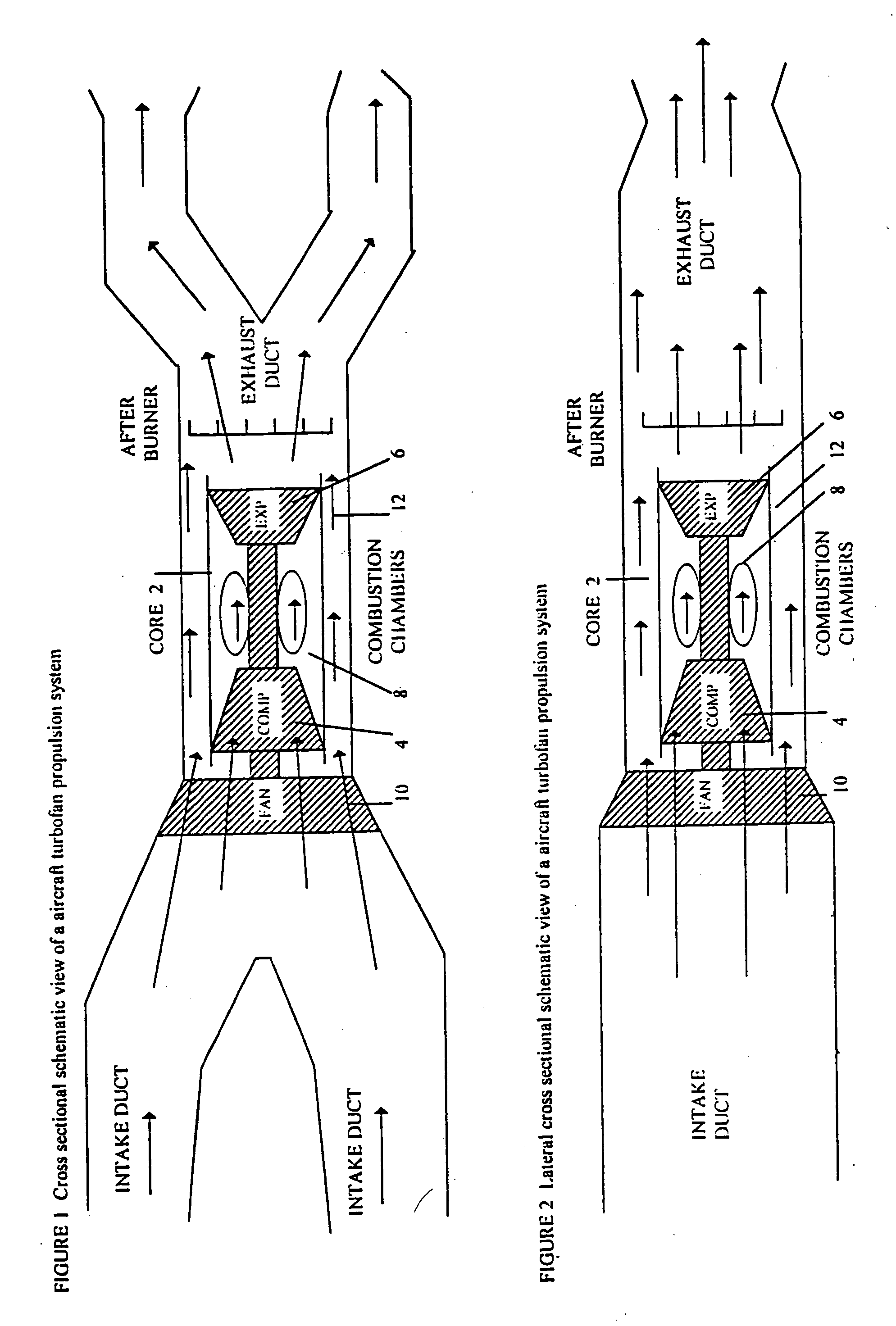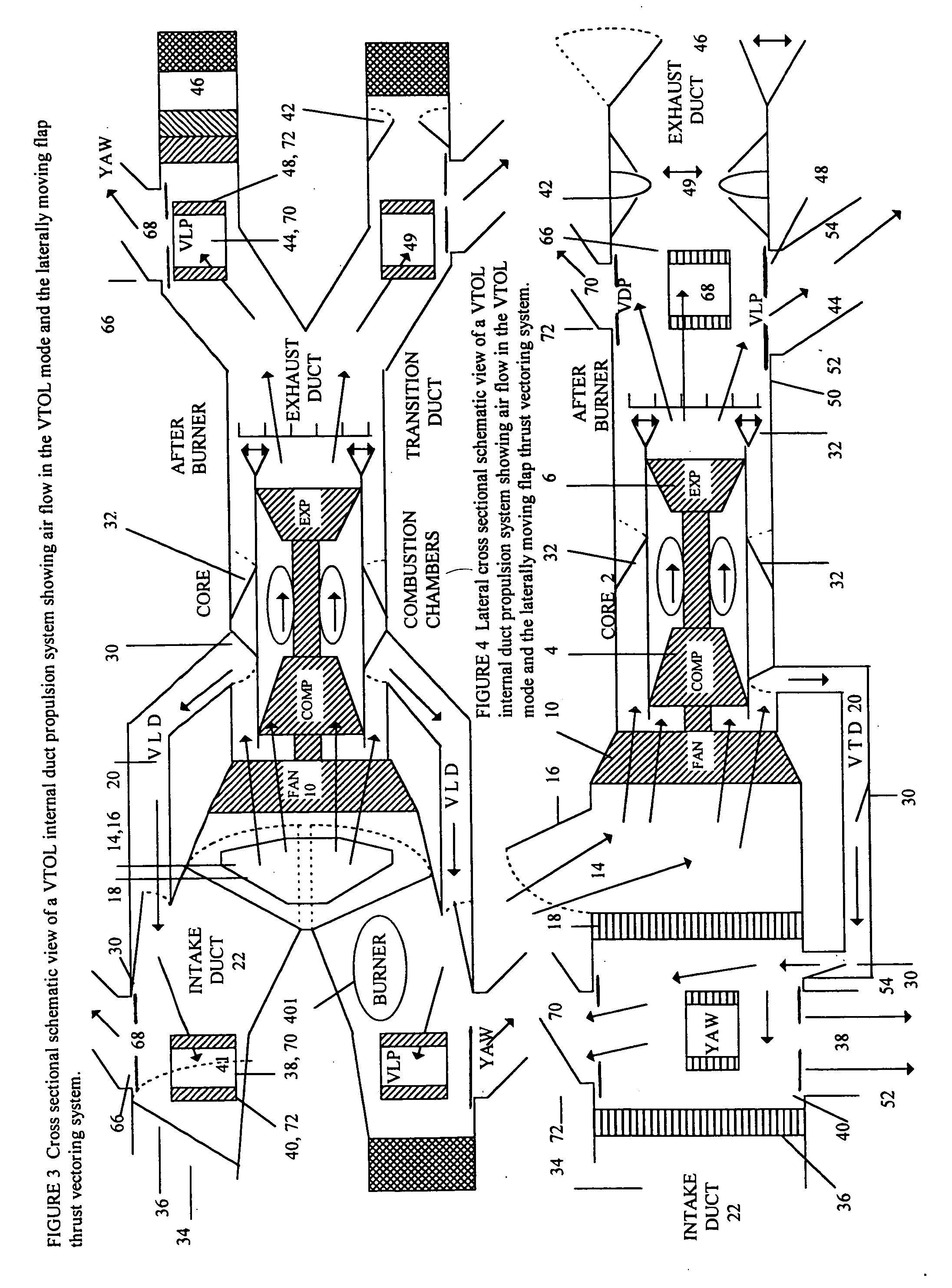Thrust vectoring
a vectoring and thrust technology, applied in the field of thrust vectoring, can solve the problems of limited forward speed and range of the vtol vehicle, and achieve the effect of reducing the forward thrus
- Summary
- Abstract
- Description
- Claims
- Application Information
AI Technical Summary
Benefits of technology
Problems solved by technology
Method used
Image
Examples
Embodiment Construction
[0091] A conventional turbofan engine depicted in FIGS. 1 and 2 has a fan (10), connected to a gas turbine core (2). The gas turbine core is composed of a compressor turbine (4), a expansion turbine (6), and combustion chambers (8). The fan (10), forces air into the gas turbine core (2), and around the gas turbine core (12). Turbofan engines are referred to as high, mid, and low bypass engines depending on the ratio of air that moves through the gas turbine core and around the gas turbine core. Propulsion systems of VTOL aircraft direct the flow of air from the fan and core of a turbofan engine downward to produce lift. If the turbofan engine is located in the rear of the aircraft, air passes through air intake ducts to reach the engine. With the turbofan engine in the rear of the aircraft lift is developed behind the center of gravity of the aircraft. To balance the aircraft during VTOL lift is required near the nose. This invention uses the air intake ducts to move air forward to ...
PUM
 Login to View More
Login to View More Abstract
Description
Claims
Application Information
 Login to View More
Login to View More - R&D
- Intellectual Property
- Life Sciences
- Materials
- Tech Scout
- Unparalleled Data Quality
- Higher Quality Content
- 60% Fewer Hallucinations
Browse by: Latest US Patents, China's latest patents, Technical Efficacy Thesaurus, Application Domain, Technology Topic, Popular Technical Reports.
© 2025 PatSnap. All rights reserved.Legal|Privacy policy|Modern Slavery Act Transparency Statement|Sitemap|About US| Contact US: help@patsnap.com



